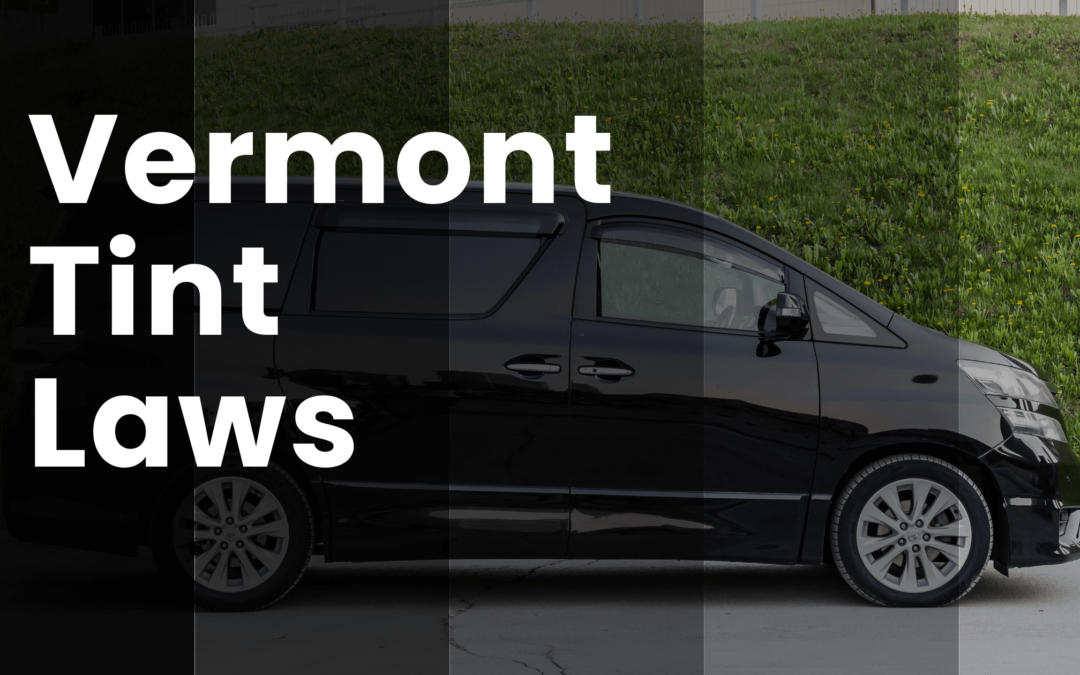Vermont Tint Laws
The year 1984 saw the inception of car window tinting laws in Vermont, and our mission is to provide you with a comprehensive understanding of these regulations. We offer a detailed overview of essential elements, such as permissible tint darkness, reflection standards, and additional guidelines governing window tinting in the state.
Disclaimer
While I have a background in commercial law and strive to provide accurate and informative content, it’s important to note that I am not a legal expert. The information presented in this blog is based on my interpretation of the subject matter, and laws can vary by location and change over time. It is strongly recommended that readers verify all sources of information and consult with legal professionals or relevant authorities before making any decisions related to tint laws.
Understanding the Terminology Regarding Tint Laws
The most important part of the legislation is understanding what VLT is and how law enforcement services check or test the percentage.
What is VLT
VLT, or Visible Light Transmission, is a measure of the amount of visible light that can pass through a window tint or film. It is commonly used to determine the darkness or opacity of window tints, and it’s an important factor in window tinting laws and regulations.
VLT is typically expressed as a percentage. For example, a window tint with a VLT of 20% allows only 20% of visible light to pass through, making it relatively dark and less transparent. Conversely, a window tint with a VLT of 70% allows 70% of visible light to pass through and is much lighter and more transparent.
How do Law Enforcement services test the VLT percentage?
Window tinting laws vary by jurisdiction, and they often specify the maximum allowable VLT for different types of windows on a vehicle, such as the front windshield, front side windows, rear side windows, and rear window. These laws are designed to ensure that drivers have adequate visibility and that law enforcement can see into vehicles for safety and identification purposes. The manner that they go about testing the VLT is by using a VLT gauge/meter.
Here is a YouTube Short from @TrafficServices and @TorontoPolice showcasing the device and how it works. Even though it is in Canada, it still is helpful to understand how the tint darkness is measured.
Window Tint Darkness in Vermont:
Visible Light Transmission (VLT), which measures the percentage of visible light allowed through your car windows, is a crucial factor in Vermont’s laws. These regulations differ between sedan cars and SUVs or vans.
Vermont Car Tint Law For sedans:
- Windshield: Non-reflective tint is allowed above the manufacturer’s AS-1 line.
- Front Side windows: Legally, no tint can be applied to this window.
- Back Side windows: You have the freedom to choose any level of darkness.
- Rear Window: You can apply any darkness to the rear window as well.
Tint Law For SUVs and Vans in Vermont:
- Windshield: Non-reflective tint is allowed above the manufacturer’s AS-1 line.
- Front Side windows: Similar to sedans, no tint can be applied legally to these windows.
- Back Side windows: You have the liberty to choose any level of darkness.
- Rear Window: You can apply any darkness to the rear window of SUVs and vans.
| Type of Window | Sedans | SUVs/Vans |
|---|---|---|
| Windshield | Non-reflective tint above AS-1 line | Non-reflective tint above AS-1 line |
| Front Side Windows | No tint allowed legally | No tint allowed legally |
| Back Side Windows | Freedom to choose any level of darkness | Freedom to choose any level of darkness |
| Rear Window | Freedom to apply any level of tint darkness | Freedom to apply any level of tint darkness |
Window Tint Reflection in Vermont:
Window tint can serve to reflect incoming light, reducing glare and heat. Vermont’s tint law outlines the acceptable levels of window reflection when using tint, emphasizing specific requirements.
Reflectivity Law For both sedans and SUVs/vans:
- Front Side windows: A mirrored or metallic appearance is not permitted.
- Back Side windows: They must not exhibit a mirrored or metallic appearance.
Other Vermont Window Tint Legal Information, Rules and Regulations:
In addition to tint darkness and reflection specifications, Vermont State has several other significant regulations associated with window tinting:
Side Mirrors
If the back window is tinted, the state requires dual side mirrors.
Restricted Colors
Vermont does not prohibit the usage of any specific tint colors.
Certificates
Film manufacturers are not obliged to certify the film they produce.
Stickers
No specific sticker to identify legal tinting is mandated by law.
Medical Exceptions
Vermont’s tinting law permits medical exemptions and allows for the use of darker tint, providing flexibility for those with medical needs.
Regulations for Out-of-State Drivers
The same regulations apply to out-of-state drivers as those for drivers living in the State.
If you are from States such as New York, New Hampshire, and Massachusetts, you are expected to abide by these laws and regulations.
It’s worth noting that interpretations of Vermont’s tinting laws and regulations might differ based on your county or place of residence. To ensure complete compliance, we highly recommend verifying this information with your local DMV or law enforcement authorities.
Our information regarding window tint laws in Vermont was last updated in 2023. As a trusted industry leader, we are committed to providing accurate and up-to-date information on window tint laws. If you come across any inaccuracies or outdated data, please don’t hesitate to reach out. Your trust in our resources is paramount, and we are dedicated to delivering the most reliable information available.

